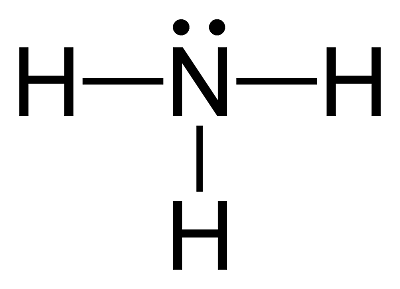Ammonia (NH 3 ) with the names Hydrogen nitride, Trihydrogen nitride is a colorless toxic gas of a hydrogenated compound containing nitrogen with high solubility in water, which is gaseous and liquid in appearance. Ammonia is originally a gas at normal room temperature and pressure, but it turns into a colorless liquid due to the compression of this gas and cooling. If the pressure on liquid ammon

Ammonia (NH 3 ) with the names Hydrogen nitride, Trihydrogen nitride is a colorless toxic gas of a hydrogenated compound containing nitrogen with high solubility in water, which is gaseous and liquid in appearance.
Ammonia is originally a gas at normal room temperature and pressure, but it turns into a colorless liquid due to the compression of this gas and cooling. If the pressure on liquid ammonia is reduced, it can be turned into gas again. This gas decomposes at a temperature of more than 400 degrees Celsius and turns into hydrogen.
Ammonia has many applications in the industry. Among its applications, the following can be mentioned:
production of nitric acid, production of explosives, production of nitrogenous and nitrate fertilizers, preparation of urea, hydroxylamine and hydrazine, in ice-making industries, synthesis Nitrogen and nitrocellulose, oil industry, food preservation and in agriculture, athletes and at home to remove fats.
Nitric acid production: Ammonia is used in the industrial production of nitric acid.
4NH3 (g) + 5O2 (g) → 4NO (g) + 6H2O (g)
Making Explosives: One of the most powerful homemade bombs is ammonium nitrate. These bombs are known as the Oklahoma bomb, the ingredients of which are ammonia and concentrated nitric acid.
Preparation of urea: Today, all the commercial processes of urea production are based on the reaction of ammonia with carbon dioxide. Carbon dioxide can be obtained as a by-product from the ammonia production plant.
Ice making industries: Ice molds are divided into flakes and molds depending on the type of use. In the ice industry, it cools a mold of ammonia and freon as the primary refrigerant and salt water as the secondary refrigerant (brine) and performs the cooling operation.
Oil industry: pure ammonia is responsible for neutralizing the acid components of crude oil due to its alkaline properties. Therefore, it prevents the corrosion of equipment such as heat exchangers, condensers and storage tanks.
Food storage and in agriculture: one of the methods of food storage is the use of cold storage (temperature below 40 degrees), which is used for longer storage of about 6 months to a year. Ammonia, halogen compounds such as chlorine and fluorine are used as refrigerants in cold houses.
Athletes: Athletes usually improve the flow of oxygen in the blood by inhaling ammonia by opening the blood vessels, and in heavy sports, it increases the level of alertness and physical strength.
Production of chemical fertilizers: among the chemical fertilizers are nitrogen fertilizers such as ammonium phosphate fertilizer, urea fertilizer, ammonium nitrate fertilizer, we will explain them further:
Preparation of hydroxylamine and hydrazine: hydrazine , which is used in the preparation of many drugs, photography, and fabric dyes, is usually obtained in the Atofina-PCUK cycle method by the primary elements of ammonia, hydrogen peroxide, and acetone.
Hydroxyl amine, which belongs to the category of amines, these substances have basic properties, a nitrogen atom in the center and one or three alkyl groups attached to them. Amines are one of the derivatives of ammonia, with the difference that instead of hydrogen, an alkyl group is placed in ammonia.
Synthesis of nitrocellulose: A substance called nitrocellulose is prepared from the reaction of cellulose with 1 to 6 molecules of nitric acid and sulfuric acid. This material is used in varnishes, plastics and artificial silk.
Grease cleaning: Ammonia can be used in the open air to clean gas stoves with a lot of grease stuck to the steel and the rods of the container (this method must be done with caution because of the toxicity of ammonia).
After Saudi Arabia, Iran has the largest share of ammonia production in the Middle East with a share of 2,900,000 tons. In 1342, for the first time, Iran's ammonia production unit was launched in Shiraz. Now Makran (Chabahar) can be considered one of the hubs of urea production in Iran. As the graph shows, Iran is one of the top five urea exporting countries in the world, along with Russia, China, Qatar and Saudi Arabia.
